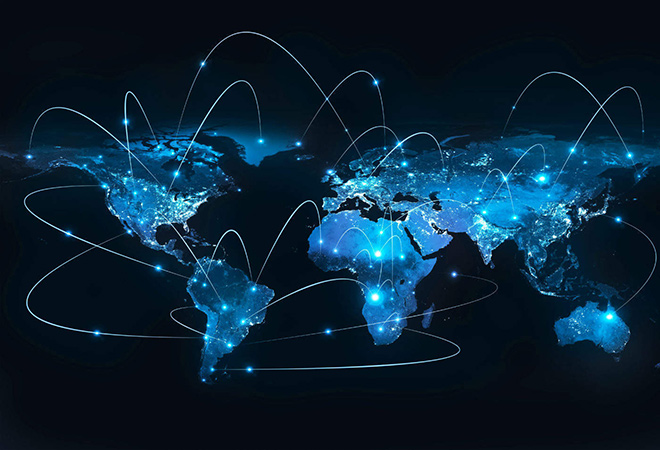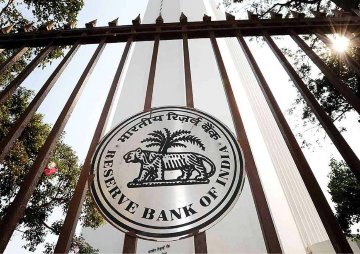India has been attempting to find new ways to continue pursuing the
middle path<1>in its strategic engagements. On the one hand, there is a greater recognition of the challenge from China and hence, a greater willingness to partner with other like-minded countries. Recent developments in the India-China relationship, particularly confrontation on the Line of Actual Control (LAC) only push India further in this direction.
On the other hand, New Delhi has also been seeking more options to find a middle ground to balance its engagement between China and others. Such efforts have caused a greater emphasis than before on multilateral groupings such as Russia-India-China (RIC), Brazil-Russia-India-China-South Africa (BRICS) and especially, the Non-Aligned Movement (NAM).
Finding the middle ground has become difficult for a few different reasons. Firstly and most importantly, tensions between India and China have heightened as a result of the current Sino-Indian clash at the Galwan River valley and the confrontation across much of the
Line of Actual Control (LAC)<2> that divides Indian and Chinese territory and forces.
Not only has there been enormous anger about the
death of Indian soldiers<3>in the clash, but there also appears to be a significant change in the attitude of Indian political elite towards China. Where there was previously some consideration of a pragmatic effort to maintain a stable working relationship with China, its recent
aggressive behaviour<4> has made it
more apparent<5>that this might not be possible.
The
second is the effect of the COVID-19 pandemic. While India has not formally blamed China for the world-wide crisis, New Delhi has become more wary about China and its role in the viral outbreak.
Though India has managed to avoid the worst effects of the health emergency by
locking down the entire country<6>, the secondary effects on the Indian economy and society are likely to be dramatic. The massive migrant crisis is only one facet of the enormous dislocation that Indian society is going through, and the situation is only likely to become
more dire<7>. Consequently, popular Indian distrust of China, even before the current confrontation at the LAC, had ballooned. New Delhi cannot overlook the consequences of COVID-19 on Indian society and the economy.
The
third is the international dimension. India has been under some pressure to join others in holding China and the World Health Organisation (WHO) – which has been seen as unusually deferential to China – accountable for the crisis. India has joined the broad
coalition of close to 120 nations<8> in carrying out an independent inquiry into the
4 origin of the pandemic, a cause that Australia championed which in itself has
caused huge friction between Canberra and Beijing<9>.
But India is also taking over as the Chair of the WHO Executive Board, which was decided last year, well before the current crisis. This is likely to put India in an uncomfortable position between its partners such as the US and Australia, who want a credible investigation into the origins of the pandemic, and China, who is likely to seek to stymie such efforts.
A related issue is Beijing’s efforts to control and manipulate multilateral agencies such as the WHO and the United Nations (UN). It is important for India that such agencies are not hijacked by any one power. Encouraging and upholding neutrality, accountability and transparency in multilateral agencies could very well become agenda items for India and other like-minded Indo-Pacific powers.
Encouraging and upholding neutrality, accountability and transparency in multilateral agencies could very well become agenda items for India and other like-minded Indo-Pacific powers
India has also just been elected as a non-permanent member of the UN Security Council, which will again complicate India’s ability to balance its engagement with China – a permanent member of the Security Council – while also exemplifying leadership in upholding these values.
Furthermore, the kind of COVID-19 pandemic assistance that China engaged in with the supply of
faulty personal protective equipment (PPE) and test kits<10> has squandered away a lot of sympathy that may have existed in India. In comparison, despite not being a member of the WHO, Taiwan has come out as an exemplary partner and its pandemic assistance has gained a lot of support for Taipei across the globe. Beijing’s behaviour has raised Indian concerns, adding to earlier disgruntlement with its
behaviour in the Nuclear Suppliers Group<11>.
The
fourth is China’s efforts to leverage the economic devastation caused by the pandemic. In April, the People’s Bank of China (PBoC)
raised its stakes<12> in one of India’s largest mortgage providers, the Housing Development Finance Corporation (HDFC), from 0.8 percent to 1.01 percent. Worried at the consequences of any opportunistic corporate takeovers and acquisitions, the Indian government revised its foreign direct investment (FDI) policy that would restrict China from acquiring significant stakes in the Indian economy.
China
reacted negatively<13> to India’s
amended FDI policy<14>, which unambiguously states that “an entity of a country, which shares a land border with India or where the beneficial owner of an investment into India is situated in or is a citizen of any such country, can invest only under the Government route.” The policy was revised within days after China raised its stakes in the HDFC and was immediately seen as
targeting China<15>, who labelled it as discriminatory.
As many countries, including the US and Japan, seek to diversity their markets away from China, India is looking to take advantage of this emerging situation by providing an alternative market. However, it is unclear whether India has created the necessary infrastructure or a business-friendly bureaucracy and political culture to cash in on this opportunity.
As many countries, including the US and Japan, seek to diversity their markets away from China, India is looking to take advantage of this emerging situation by providing an alternative market. However, it is unclear whether India has created the necessary infrastructure or a business-friendly bureaucracy and political culture to cash in on this opportunity
The Indian government is acutely aware of its lack of capacity to facilitate countries turning to India and has asked state governments to come up with measures that incentivise significant economic and technological investment in the country. But India’s
challenges<16> are far too many including land acquisition, tax and labour laws, quality of infrastructure, and governance issues that may not be addressed fast enough to attract anyone trying to shift out of China. In fact, many businesses are finding Vietnam as a much more attractive alternative than India.
All of the above factors increasing tensions in the Sino-Indian relationship have pushed India towards greater engagement with like-minded partners in the Indo-Pacific. The fact that the
Quad came back<17> in a second iteration is a testament to the growing perception of the challenge that China poses in the region. More recently, in the wake of the pandemic, this cooperation has extended to a
Quad-Plus engagement<18> involving three other Indo-Pacific powers – New Zealand, South Korea and Vietnam. There is little doubt that the clash at Galwan will force India further along this path.
There is a strong case for these like-minded countries to continue working together in the post-pandemic scenario on other issues raised by China’s rise in the region. Just as the original Quad took shape in the wake of the 2004 Indian Ocean tsunami, this group has the potential to emerge as a strategic entity after the COVID-19 pandemic is over because each of the new partners has had to confront aggressive Chinese behaviour.
Whether a Quad-plus arrangement becomes a reality or not, there is a strong likelihood that such minilaterals will take shape in the Indo-Pacific in a post-COVID world due to the widely prevalent apprehension towards China. But this is not going to be as straightforward for countries like India which are still seeking strategic involvement in other regional and multilateral institutions as a way of buying some bargaining space. India’s Foreign Minister Dr. S Jaishankar in a November 2019 speech said
<19> as much:
“ maximise options and expand space naturally requires engaging multiple players…Hedging is a delicate exercise, whether it is the non-alignment and strategic autonomy of earlier periods, or multiple engagements of the future. But there is no getting away from it in a multipolar world.”
India’s then Foreign Secretary Vijay Gokhale referred to this saying that India is no more non-aligned but that it has an
issue-based alignment<20> approach.
India’s recent approach to RIC, BRICS and the NAM may be a consequence of such thinking. After skipping the NAM Summits in 2016 and 2019, Modi in 2020 decided to
join the virtual NAM Summit<21>. Whether this represents a significant shift in India’s approach towards the NAM is unclear, but it is more likely that New Delhi sees this as one more group which will hopefully provide at least another layer of protection – even if a flimsy one – from China’s threats.
On the other hand, given the initial rationale of the RIC as an anti-US counterbalance, it does not make sense that India is still as invested in this group. New Delhi’s growing convergence of strategic interests with the US and US allies is a stark contradiction with that of the RIC agenda, particularly as India-China border tensions increase. However, even after the latest clashes, India’s foreign minister attended the
virtual RIC Foreign Ministers Meeting<22> held on 23rd of June. Notwithstanding, the
incongruent strategic goals<23> between India, Russia and China are likely to begin showing up sooner rather than later.
The same applies to BRICS, another group in which India and China are partners. As with the NAM, it is likely that India sees membership in these groups as a defensive response to China’s power, as a way of moderating Beijing rather than one of grand ambition.
Nevertheless, a pertinent question is whether India can continue all of these parallel conversations in a strategically useful manner. In the aftermath of the Galwan clash, India’s choices just became harder.
This essay originally appeared in Perth US Asia Centre
Endnotes
<1> Shivshankar Menon (2020), ‘
India’s Foreign Affairs Strategy’, Brookings India, May; Sunil Khilnani et al. (2012), ‘
Non-Alignment 2.0: A Foreign and Strategic Policy for India in the Twenty First Century’, Centre for Policy Research, February.
<2> Sushant Singh (2020), ‘
Line of Actual Control: Where is it located and where India and China differ’, The Indian Express,
18 June.
<3> Dinakar Peri, Suhasini Haidar, Ananth Krishnan (2020), ‘
Indian Army says 20 soldiers killed in clash with Chinese troops in the Galwan area’, The Hindu, 17 June.
<4> Rakesh Sood (2020), ‘
Writings on the Chinese wall’, Observer Research Foundation, 20 June.
<5> Ananth Krishnan (2020), ‘
For minor tactical gains on the ground, China has strategically lost India, says former Indian
Ambassador to China’, The Hindu, 21 June.
<6> Hugo Seymour (2020), ‘
Locking down 1.3 billion people: India’s swift response to COVID-19’, Perth USAsia Centre, 6 April.
<7> Jay Ramasubramanyam (2020), ‘
India’s treatment of Muslims and migrants puts lives at risk during COVID-19’, The
Conversation, 21 May.
<8> Daniel Hurst (2020), ‘
Australia hails global support for independent coronavirus investigation’, The Guardian, 18 May.
<9> Jeffrey Wilson (2020), ‘
The Australia-China trade war: Vale the ‘grand bargain’?’, The China Story, 18 May.
<10> Teena Thacker & Anandita Singh Mankoita (2020), ‘
Tens of thousands of Chines PPE kits fail India safety test’, The Economic Times, 16 April.
<11> Economic Times (2019), ‘
China rules out India’s entry into NSG without ‘consensus’ on allowing non-NPT countries’, 21
June.
<12> The Hindu (2020), ‘
People’s Bank of China picks up 1% stake in HDFC’, 12 April.
<13> Business Standard (2020), ‘
India’s new FDI policy is discriminatory and against tree trade: China’, 20 April.
<14> Government of India Ministry of Commerce and Industry (2020), ‘
FDI Policy Selection’, 17 April.
<15> Harsh Pant & Nandini Sarma (2020), ‘
India Cracks Down on Chinese Investment as Mood Turns Against Beijing’, Foreign
Policy, 28 April.
<16> Bloomberg (2020), ‘
India looks to lure more than 1,000 American companies out of China’, The Economic Times, 7 May.
<17> Hong Le Thu (20219), ‘
New perspectives for the revived Quad’, 14 February, The Strategist.
<18> Rajeswari Pillai Rajagopalan (2020), ‘
Towards a Quad-Plus Arrangement?’, Perth USAsia Centre.
<19> Ministry of Foreign Affairs, Government of India (2019), ‘
External Affairs Minister’s speech at the 4th Ramnath Goenka Lecture 2019’, 14 November.
<20> Nayanima Basu (2019), ‘
India is no longer ‘non-aligned’, says Foreign Secretary Vijay Gokhale’, The Print, 10 January.
<21> Shubhajit Roy (2020), ‘
PM Modi at NAM summit: terrorism, fake news ‘deadly viruses’, Indian Express, 5 May.
<22> The Wire India (2020), ‘
At Russia-India-China Meet, India Talks of Need to Respect Legitimate Interests of Partners', 23 June.
<23> Rajeswari Pillai Rajagopalan (2020), ‘
Growing Russia-India-China Tensions: Splits in the RIC Strategic Triangle?’, The
Diplomat, 17 March.
The views expressed above belong to the author(s). ORF research and analyses now available on Telegram! Click here to access our curated content — blogs, longforms and interviews.




 PREV
PREV


